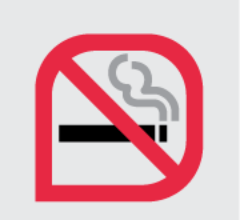This year, Revista Epoca reported that a man named Rafael Favaro sued the government of Brazil to obtain public subsidy for lifetime treatment of a rare form of anemia (PNH). His treatment –Soliris- costs Brazilian taxpayers approximately $440,000 per year and is among the most expensive medicines in the world. Most US insurers do not cover the medicine, only Quebec funds the medicine in Canada, and Scotland does not provide any subsidy.
This year, Revista Epoca reported that a man named Rafael Favaro sued the government of Brazil to obtain public subsidy for lifetime treatment of a rare form of anemia (PNH). His treatment –Soliris- costs Brazilian taxpayers approximately $440,000 per year and is among the most expensive medicines in the world. Most US insurers do not cover the medicine, only Quebec funds the medicine in Canada, and Scotland does not provide any subsidy.
Soliris wasn’t on the list of medications eligible for public funding in Brazil either, a country that spends an average of US$369 per person on health (compare to the US at $4,437). Rather, the medicine was recommended to Favaro by a hematologist with connections to the US manufacturer Alexion. His doctor also referred him to the lawyer who would take his case to court to win public subsidy, all expenses paid by the Brazilian Association of PNH, an organization that also received financing from Alexion. The same lawyer had previously won rights to Soliris for 34 other patients.
While all health and insurance systems are intended to pool funding in order to pay out when illness strikes, the story of Rafael Favaro reflects a difficult and somewhat hidden problem in the rapidly growing countries of Latin America and Asia. As economies grow, the market for pharmaceutical and devices industries grows as well; emerging markets spending on healthcare is now over $ 200 billion, and is forecasted to reach the level of high-income countries by 2020. And, as the Soliris example illustrates, industry is increasingly seeing a profit opportunity in high-cost niche drugs, rather than low-cost, high-impact/volume medicines. Middle-income populations are aging rapidly but are better educated and living longer, demanding more healthcare from their governments. Further, individual rights can be increasingly litigated in countries where governments have long promised but failed to deliver comprehensive healthcare.
One possible result is excellent health care for a few, and implicit rationing for the rest. A study by Diana Pinto and co-authors conducted in Colombia found that treating the few people with the genetic disease Gaucher’s Syndrome for a year was equivalent to the cost of insuring 20,000 poor people with a package of cost-effective health care over the same period. High-cost interventions benefitting few can frequently displace low-cost, cost-effective interventions that could transform global health; this helps to explain why we see only 44% of Indian children fully immunized while many high-cost procedures are subsidized, or 20% of Egyptian children stunted while 20% of public expenditure goes to send a few patients overseas for treatment every year.
Last week, however, the Pan American Health Organization’s Regional Committee approved a resolution to adopt a more thoughtful, evidence-based approach to deciding public spending priorities in healthcare. Known by the decidedly unsexy term “health technology assessment,” the idea is to bring due process to the difficult task of rigorously and ethically assessing costs, benefits, and trade-offs of new technologies to inform public spending decisions. A CGD working group recommended just such a strategy in our report on priority-setting institutions in health, with the idea that the big gains in global health will come from those same middle-income countries that are having most difficulty setting priorities for public expenditure. The PAHO resolution is the first of its kind in the world, making the Americas the first region to agree to systematically and integrally assess the value and relative cost-effectiveness of new medical technologies.
Resolutions are good, but the proof will be in the work that PAHO and member country governments do to build and strengthen institutions that can carry out these functions with legitimacy and political backing. The planned budget looks paltry ($250,000 above and beyond the routine budget, or less than a year’s supply of Soliris).* Although the Inter-American Development Bank and the World Bank have also assigned modest budgets to support these functions, Latin America’s nascent health technology assessment institutions are facing a multitude of stakeholders, interest groups and industry professionals.
Global health funders and advocates like the Bill & Melinda Gates Foundation, the Global Fund and others should recognize that getting highly cost-effective interventions to scale in middle-income countries might involve dealing with the kinds of difficult trade-offs and competing interest groups illustrated by the Rafael Favaro story. With that recognition, I’d like to see funders put more money and technical expertise behind priority-setting systems that are methodologically rigorous, ethical and transparent, like the ones the PAHO countries have committed to support, and that have a fighting chance to fund the highly cost-effective interventions that will make a difference for population health.
(PS, might there also be a role for international pooled purchasing of drugs for the orphan diseases like PNH that will always come to diagnosis and whose treatments are so exorbitantly priced?)
* Pharmaceutical spending on advertising ranges from 23 and .8 percent of spending in Latin America—suggesting that total advertising spending falls somewhere 10.3 Billion to 360 million (Latin America’s total pharmaceutical market is estimated at $45 billion).







